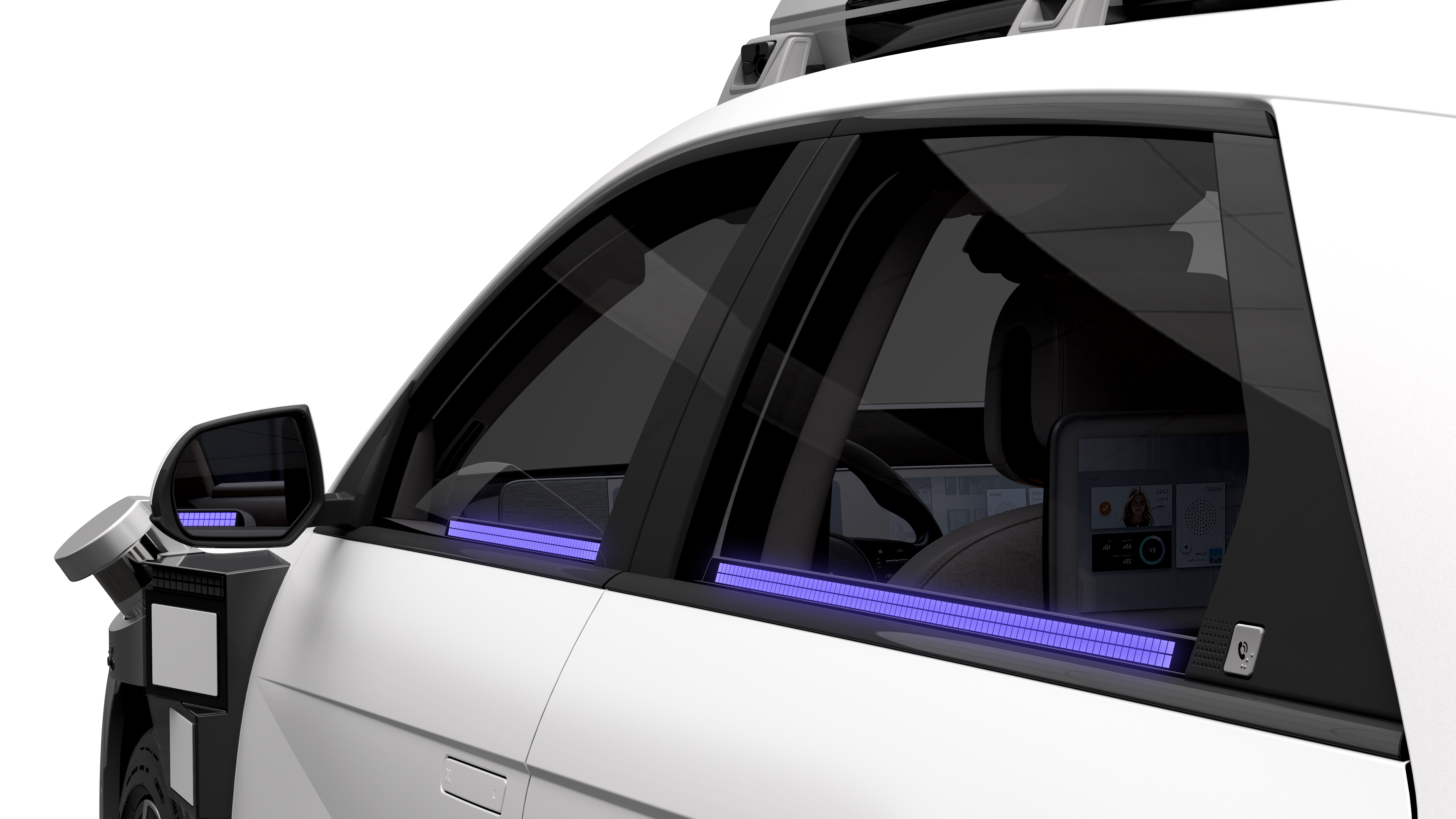Millions of Americans are limited in how much they can travel because of disabilities - with an estimated 3.6 million refraining from leaving home because of transportation limitations and added stress. And when they do travel, just preparing for that trip presents unique difficulties.
“Simply getting out the door may be difficult. Depending on a person’s disability, they may have to pack supplies for specific medical needs, bring along different mobility devices, and may need more time to mentally or emotionally prepare for stepping outside,” said Felice Ling, a lead user experience researcher with Motional.
Ride-hail services are one way those with travel-limiting disabilities make transit connections. But making it to the pick-up spot can take longer than expected and add additional stress. Currently, passengers running late can call the vehicle driver and ask for some more time. But what happens when the ride doesn’t have a human driver?
One idea developed by Motional’s researchers and designers is a mobile app-based feature that would allow passengers to request more time to meet their ride.
“If the passenger realizes the pickup spot is further away than expected, or if they forget an essential item upstairs, they could open the rideshare app, tap ‘wait,’ and get a few extra, complimentary minutes,” Ling said.
Understanding accessibility needs among passengers
The need for a “wait for me” button emerged through Motional’s extensive, research-based efforts to make its robotaxis accessible. An estimated 25.5 million Americans experience a travel-limiting disability, with 70 percent of this population reporting a reduction in day-to-day travel because of their condition. According to one survey, 3.6 million Americans do not leave their homes because of their disabilities.
One of the ways Ling’s team collected data was by asking volunteers with disabilities to record and document themselves as they prepared to take a trip.
“We saw video after video of people getting ready for trips. If they’re hard of hearing, they need to grab their hearing aids and back up batteries. Some need to take extra clothing. And on top of that people with mobility issues take longer to walk anywhere,” Ling said. “All these things take time and effort. Prepping mentally takes time.”
This was reinforced during interviews with study participants.
“By the time I finally get to do what I was supposed to be doing, I’m so darn tired,” one participant told Motional researchers. “It makes it hard to even go. I mean, it sucks out any kind of pleasure that you’re going to get from any of this.”
Ling remembers presenting the findings to Motional’s design team.
“I said ‘We need a way that people are able to ask the car to wait for them,’” Ling recalled.
The design team brainstormed solutions and went through a number of versions before developing a “wait for me” button.

Passengers would be able to continue to tap the “wait” button as needed, however, the vehicle will then charge a small fee, like if it was a parking meter. For passengers who regularly need their autonomous vehicle to wait for them, increased complementary wait times could be programmed into the system.
Building for everyone and prioritizing safety
It’s not just ride-hail service passengers with disabilities that can find themselves running late to meet the vehicle: many who regularly use this type of mobility service understand the panic that comes with missing a ride.
A passenger can lose track of time completing a last-minute household chore or an appointment runs longer than expected.
“I know I should always plan and give myself ten minutes to leave the house. But there are times when the elevator’s been broken, and I have to walk down eight flights of stairs,” a research participant shared with the Motional team. “You can’t always be on time. To feel anxious already before you even get in the car can stress you out.”
Linh Pham, a product design lead, said two key goals for Motional is to ensure the vehicles are safe and comfortable for passengers. Those concerns extend to every part of the trip, even if the passenger isn’t even in the vehicle yet.
“Running late can be stressful, and when it happens to be for a pick-up on a busy road, it can even be dangerous,” said Pham. “Safety is a core value for Motional, and that extends to our passengers. We don’t want people rushing to cross the street, trading safety for a few extra seconds, out of fear the robotaxi will leave without them, when we can implement a simple feature that can help alleviate that anxiety.”
During testing, the feature has proved popular with riders across the board.
“The reaction has been, ‘Oh I would totally use this, this is something that has value,’” Ling said.
It also shows the benefits of designing products that take accessibility into consideration.
“This idea came from observing and speaking with people with disabilities, but when you are designing for the edges, you end up designing for everyone,” she said.
Designing a user-friendly robotaxi
When Motional launches its public robotaxi service in Las Vegas in 2023, its fleet of IONIQ 5 robotaxis will be equipped with cutting-edge autonomous vehicle technology. The robotaxis will be outfitted with more than 30 sensors that provide 360-degree coverage of the vehicle, and a high-powered on-board computer that uses well-tested modeling to process the information and operate the vehicle. Motional is also again working with TÜV SÜD, a world-leading independent technical service provider with experience assessing AVs, to evaluate overall vehicle safety.
The Motional team has also been focused on user experience, which includes how passengers will interact with the vehicle, passenger-friendly amenities, and the quality of the ride. The biggest obstacle has been understanding the ways passengers traditionally interact with a human driver, and how to recreate those interactions in a familiar way with a robotaxi.

To accomplish this, Motional researchers and scientists have gleaned insight from tens of thousands of test rides over the past few years. This feedback has informed a range of vehicle features, such as how passengers unlock and open doors, how they start their rides, communicate a change in destination, report an emergency, or end a ride early.
For example, three control buttons located underneath passenger screens have different shapes to help those with vision impairments signal they are ready to go, or take other actions. Microphones on the vehicle’s exterior allow those in need of help accessing the vehicle to contact remote assistance operators. Passengers can also push a button on the app requesting the vehicle honk its horn or flash its light to identify itself.
“We want taking a Motional robotaxi to be a comfortable experience passengers will choose again - not one that adds stress to a journey,” said Ling. “Asking your robotaxi to wait for you should be as easy as tapping a button.”

